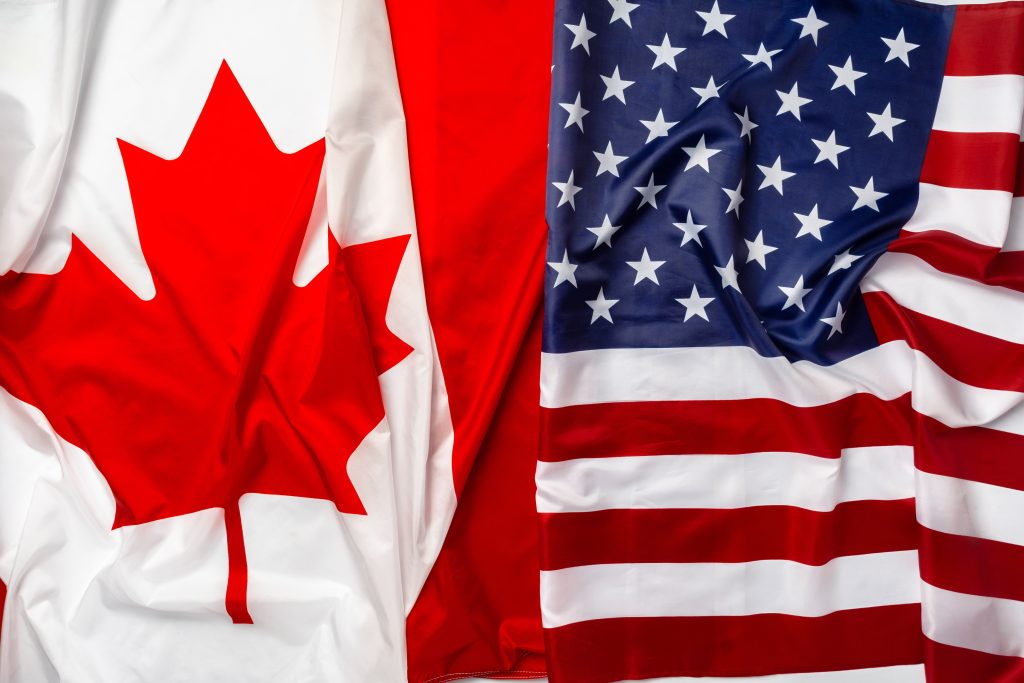U.S. Immigration vs. Canadian Express Entry – 2025 Comparison
In 2025, international immigration remains a hot topic, with thousands of skilled professionals and families seeking better opportunities in North America. Two popular destinations — the United States and Canada — offer distinct immigration pathways. Among them, the U.S. employment-based immigration and Canada’s Express Entry system are the most competitive and structured. But how do they compare in 2025?

This detailed comparison will help you understand which country aligns best with your immigration goals by evaluating eligibility, processing times, costs, pathways to permanent residency, and more.
Understanding the Basics
What Is U.S. Immigration?
The U.S. offers various immigration options, including family-based, employment-based, refugee, and diversity lottery visas. The most common pathway for skilled workers is through employment-based immigrant visas (EB-1, EB-2, EB-3) or non-immigrant work visas like H-1B.
What Is Canada’s Express Entry?
Express Entry is Canada’s online system for managing applications for permanent residence under three federal economic immigration programs:
- Federal Skilled Worker (FSW)
- Federal Skilled Trades (FST)
- Canadian Experience Class (CEC)
It operates on a points-based Comprehensive Ranking System (CRS) that evaluates age, education, experience, and language proficiency.
U.S. Immigration vs. Express Entry: Key Differences in 2025
1. Eligibility Criteria
U.S. Employment-Based Immigration:
- Requires a job offer from a U.S. employer.
- Employer must usually go through a Labor Certification (PERM) process.
- Education, skills, and experience must match the offered job.
- H-1B visa candidates must hold a bachelor’s degree or higher.
Canadian Express Entry:
- No job offer required, though having one increases CRS score.
- Applicants must take language tests (IELTS or CELPIP).
- Need to have educational credential assessment (ECA).
- Must meet the minimum points threshold to receive an Invitation to Apply (ITA).
✅ Winner: Canada – More accessible without requiring a job offer.
2. Application Process
U.S. Immigration Process:
- Complex and paper-intensive.
- Involves employer sponsorship, labor market tests, USCIS petitions, and visa interviews.
- Long waiting periods for green card approvals, especially for citizens from countries with high demand like India and China.
Express Entry Process:
- Fully online and streamlined.
- Express Entry pool selection based on CRS score.
- Frequent draws (bi-weekly or monthly) offer transparency and predictability.
- ITA leads to PR application within 60 days.
✅ Winner: Canada – Simpler, faster, and more transparent.
3. Processing Time in 2025
| Immigration Pathway | Average Processing Time (2025) |
|---|---|
| U.S. EB-2/EB-3 (Green Card) | 1.5 to 4 years |
| U.S. H-1B (Work Visa) | 6 to 12 months |
| Canadian Express Entry | 6 to 8 months (PR approval) |
✅ Winner: Canada – Much faster processing.
4. Cost Comparison
U.S. Immigration Costs:
- H-1B Visa: $1,500 – $6,000 (usually paid by employer).
- Green Card: $3,000 – $7,000+ (incl. legal fees).
- Hidden costs: Attorney fees, renewals, premium processing.
Canada Express Entry Costs:
- Language test: ~$300
- ECA: ~$200
- Application fee: $1,365 (incl. PR fee)
- No need for legal representation (optional).
✅ Winner: Canada – More affordable for individuals.
5. Pathway to Permanent Residency
U.S.:
- Non-immigrant visa holders like H-1B must wait for employer sponsorship.
- PR (green card) process is lengthy and quota-based.
- No guaranteed transition to green card from work visa.
Canada:
- Express Entry directly leads to Permanent Residency (PR).
- Clear roadmap to citizenship in 3–5 years.
- PRs enjoy full healthcare and social benefits.
✅ Winner: Canada – More direct and secure route to PR.
6. Job Market and Career Growth
U.S.:
- Larger economy and higher salary potential in many sectors.
- World-class tech hubs like Silicon Valley.
- Strict employer restrictions and job-switching limitations for visa holders.
Canada:
- Growing demand in healthcare, tech, construction, and finance.
- Easier to switch jobs or become self-employed as a PR.
- Smaller economy but steady job growth.
📊 Tip: If you’re seeking maximum earnings and are willing to navigate the visa maze, the U.S. may suit you. For long-term security and flexibility, Canada wins.
Family Sponsorship & Dependent Visas
U.S.:
- H-1B dependents (H-4) can stay but may not work (except under specific conditions).
- Family sponsorships have long backlogs, especially for non-immediate relatives.
Canada:
- PR holders can sponsor spouses, children, and parents.
- Spousal open work permit available.
- Family reunification is a priority in 2025.
✅ Winner: Canada – More inclusive and family-friendly.
Citizenship Timeline
| Country | PR to Citizenship Eligibility |
|---|---|
| United States | 5 years (with green card) |
| Canada | 3 years (out of 5 as PR) |
Both countries offer paths to dual citizenship, but Canada’s is faster and less bureaucratic.
Pros and Cons Summary
🇺🇸 U.S. Immigration Pros:
- Higher salary potential
- Bigger tech and corporate hubs
- Cultural diversity and global exposure
🇺🇸 U.S. Immigration Cons:
- Long processing times
- Visa uncertainty (especially H-1B)
- No direct PR from most non-immigrant visas
🇨🇦 Canadian Express Entry Pros:
- Direct PR with or without a job offer
- Faster processing and lower fees
- Better social benefits and family support
🇨🇦 Canadian Express Entry Cons:
- Smaller job market
- Cold weather in some regions
- Taxes slightly higher
Final Verdict: Which One Should You Choose?
If your priority is quick permanent residency, family-friendly policies, and a transparent application system, Canada’s Express Entry is your best bet in 2025.
However, if you’re aiming for higher pay, top-tier career growth, and are comfortable with a longer and more complex immigration process, then U.S. immigration might be worth the effort.
Actionable Tips Before You Apply
- Take a language test early (IELTS/CELPIP for Canada, TOEFL may help U.S. university admissions).
- Evaluate your qualifications with WES or other ECA agencies.
- Improve your CRS score by boosting language skills or obtaining a Canadian job offer.
- Consult an immigration expert to explore your best pathway based on your goals.











